|
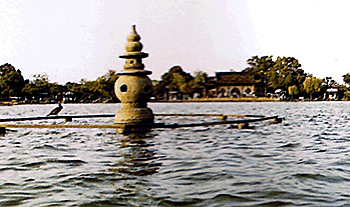 The West Lake scenic area takes up 60 sq. kilometers
with 5. 6 sq. kilometers being occupied by the lake's body
water. Being encircled on three sides by proportional hills with
one side bordering upon downtown, the lake , though not vast,
is elegantly dissected. With long causeways crossing on its
quivering water the lake is dotted by isles, pavilions, peaks,
gardens, caves and springs. More exactly there are over 60
views and more than 40 important protected units of ancient
relic in the lake area. Among them are "Ten Scenic Views of
West Lake", "New Ten Scenic Views of West Lake", and the
four historic sites (Lingyin Temple, Temple of Yue Fei, Stone carvings on the Peak Flew from Afar. and Six Harmonies
Pagoda). Newly added delights to this area are four museums
dealing with silk, tea, Chinese medicine and Southern Song
Dynasty palace porcelain, and the memorial halls of
distinguished figures. The West Lake scenic area takes up 60 sq. kilometers
with 5. 6 sq. kilometers being occupied by the lake's body
water. Being encircled on three sides by proportional hills with
one side bordering upon downtown, the lake , though not vast,
is elegantly dissected. With long causeways crossing on its
quivering water the lake is dotted by isles, pavilions, peaks,
gardens, caves and springs. More exactly there are over 60
views and more than 40 important protected units of ancient
relic in the lake area. Among them are "Ten Scenic Views of
West Lake", "New Ten Scenic Views of West Lake", and the
four historic sites (Lingyin Temple, Temple of Yue Fei, Stone carvings on the Peak Flew from Afar. and Six Harmonies
Pagoda). Newly added delights to this area are four museums
dealing with silk, tea, Chinese medicine and Southern Song
Dynasty palace porcelain, and the memorial halls of
distinguished figures.
The vista of West Lake varies with the changing of
seasons. In fact it features the passage of time and changing
of weather in such concord that it looks different from morning
to night, in rain or snow, when it's cloudy or clear. And in
praise of her beauty great poets over the centuries had left
behind them odes still recited today.
Lotus Stirred by the Breeze at Courtyard. A large park
consisted of six parts featuring lotus, lakeside woods and villa
village respectively. Spring Dawn on Su Causeway connects the north and the
south of West Lake and looks the most beautiful in spring. It
owes its creation to the great Northern Song Dynasty poet Su
Dongpo.
Autumn Moon on Calm Lake: A large pavilions surrounded by
the lake on three sides with a peninsular platform. A preferable
place to see the lake in all weathers, especially on Mid-Autumn
night.
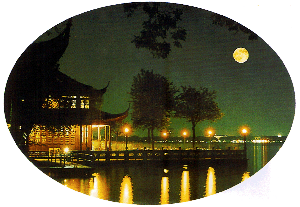
Three Towers Mirroring the Moon: In the water off the Xiao
Ying Zhou Islet, which contains lakes within, stand three ancient
towers in whose holes candles are fixed on special occasions
so that moon-like reflections are created on the lake.
Melting Snow on Broken Bridge: Known for snow vista with
a location at the east end of Bai Causeway. The legend "Lady
White" is said to begin to happen here.
Viewing Fish at Flowery Harbor: With the picturesque scene,
it's a traditional venue for viewing-fish and peony admiration.
Crane Release Pavilion: The residence of Ling Hejin, a poet and hermit in Northern
Song Dynasty who sought pleasure in keeping cranes and cultivating plums, There goes
a story of Ling taking plum as his wife and crane as his son. An ideal place to
appreciate plums. Yellow Dragon Cave: An ancient style garden of Taoism 'origin set in bamboo forest
with running brooks and deep caves. A world of the past as featured by ancient
entertainments.
Nine Creeks Amid Misty Bamboo: Nine creeks and eighteen gullies wind through the
hills in misty greenness. An experience of intoxicating wild nature.
Tiger Spring: Renown for pure and sweet spring water. Dragon Well tea made with this
spring water is a "Double Uniqueness." Besides there are a display house of Monk Jigong
and a memorial hall of a Buddhist master, Hong Yi.
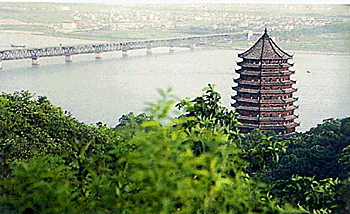
Guo Villa: A private garden built in the Qing Dynasty, famed as "No I Park in South
China, "It's a classic of simplicity in architecture and eleg view.
Viewing Plums Around Ling Peak: One of the venus for plum admiration in Hanazhou
with more than SUUU plum trees in a variety of 45. A sea of plum in the deep serene
valley represented by red plum.
Winding Lanes Through Bamboo Forest at Yunxi: With tinkling brooks, it's a cool world
of spectacular valley covered with dense woods and bamboo forest.
West Lake Super wonder: One view in the former imperial garden of Qina Dvnastv
with an antithetical couplet, masterfully depicting the serenity of The Lake scrolled on the
painted pavilion pillars which is reversibly readable.
A Land of Fantasy in Lingshan Mountain: A natural shaft-like cave of corrosion 19
kilometers southwest Hangzhou proper. 104 meters difference in height between the main
cave and its included upper cave . Stone staircase links up the caves where stone falls
and river course are to be found.
Nanping Evening Bell: One view of the Jingci
Temple at the toot of Nanping Hill. Built in 954, the
temple contains a 10000 kilogram bronze bell
sounding majestically under striking inside the temple
is also the ancient well which is said to be once
used by monk Jigong for underground transportation
of timber.
Stone Carvings under the Peak That Flew From Afar: Over 470 carvings made respectively in the Five
Dynasties, Song Dynasty and Yuan Dynasty. The most
typical are those of Yuan origin which are deemed
unsurpassable in theme and number in China.
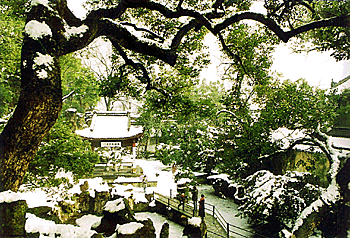
Six Harmonious Pagoda: A state- treasured
architectural heritage of wood-brick structure built in
970. 13 stories outside but 7 inside, 59. 89 meters in
height. Ling Yin Temple: One of the ten Zen temples in
China, where beginning dates back to 326 AD. Its
Hall of Great Achievement is the state's famous
ancient single-eave structure in which sits the 24. 8
meter-tall Sakamuni all Gold-tilted and the biggest
such wood sculpture in China.
Tomb and Temple of Yue Fei: A temple & tomb
build in 1221 in honor of Yue Fei, a famous anti-Jin
general in the Southern Song Dynasty.
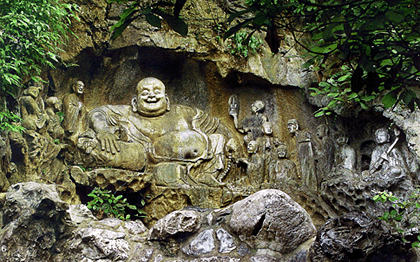
Hangzhou Stele Forest: Located in Confucius
Temple Hangzhou. Here one finds the earliest stone-
carved star map in the world and "Emperors Guang
and Yao Stone Book in the Southern Song Dynasty.
There are also steles, paintings and other kinds of
works of calligraphy by the most famous ancient art
masters sach as Wang Xizhi, Wang xianzhi and Su
Shi Phoenix Temple: One of the four biggest Islamic
temples in China whose origin goes back to the Tang
Dynasty when its construction was initiated in the
year 1341.
Xilin Seal-engravers Society: A place of interest on
Solitary Hill on West Lake as well as the site for the
famous Xilin Seal-engravers Society. lt is actually a
serene historic site where one see "Homes of the
Three Old" (a Han Dynasty relic), and Huayan Pagoda,
etc.
|  The West Lake scenic area takes up 60 sq. kilometers
with 5. 6 sq. kilometers being occupied by the lake's body
water. Being encircled on three sides by proportional hills with
one side bordering upon downtown, the lake , though not vast,
is elegantly dissected. With long causeways crossing on its
quivering water the lake is dotted by isles, pavilions, peaks,
gardens, caves and springs. More exactly there are over 60
views and more than 40 important protected units of ancient
relic in the lake area. Among them are "Ten Scenic Views of
West Lake", "New Ten Scenic Views of West Lake", and the
four historic sites (Lingyin Temple, Temple of Yue Fei, Stone carvings on the Peak Flew from Afar. and Six Harmonies
Pagoda). Newly added delights to this area are four museums
dealing with silk, tea, Chinese medicine and Southern Song
Dynasty palace porcelain, and the memorial halls of
distinguished figures.
The West Lake scenic area takes up 60 sq. kilometers
with 5. 6 sq. kilometers being occupied by the lake's body
water. Being encircled on three sides by proportional hills with
one side bordering upon downtown, the lake , though not vast,
is elegantly dissected. With long causeways crossing on its
quivering water the lake is dotted by isles, pavilions, peaks,
gardens, caves and springs. More exactly there are over 60
views and more than 40 important protected units of ancient
relic in the lake area. Among them are "Ten Scenic Views of
West Lake", "New Ten Scenic Views of West Lake", and the
four historic sites (Lingyin Temple, Temple of Yue Fei, Stone carvings on the Peak Flew from Afar. and Six Harmonies
Pagoda). Newly added delights to this area are four museums
dealing with silk, tea, Chinese medicine and Southern Song
Dynasty palace porcelain, and the memorial halls of
distinguished figures. 








